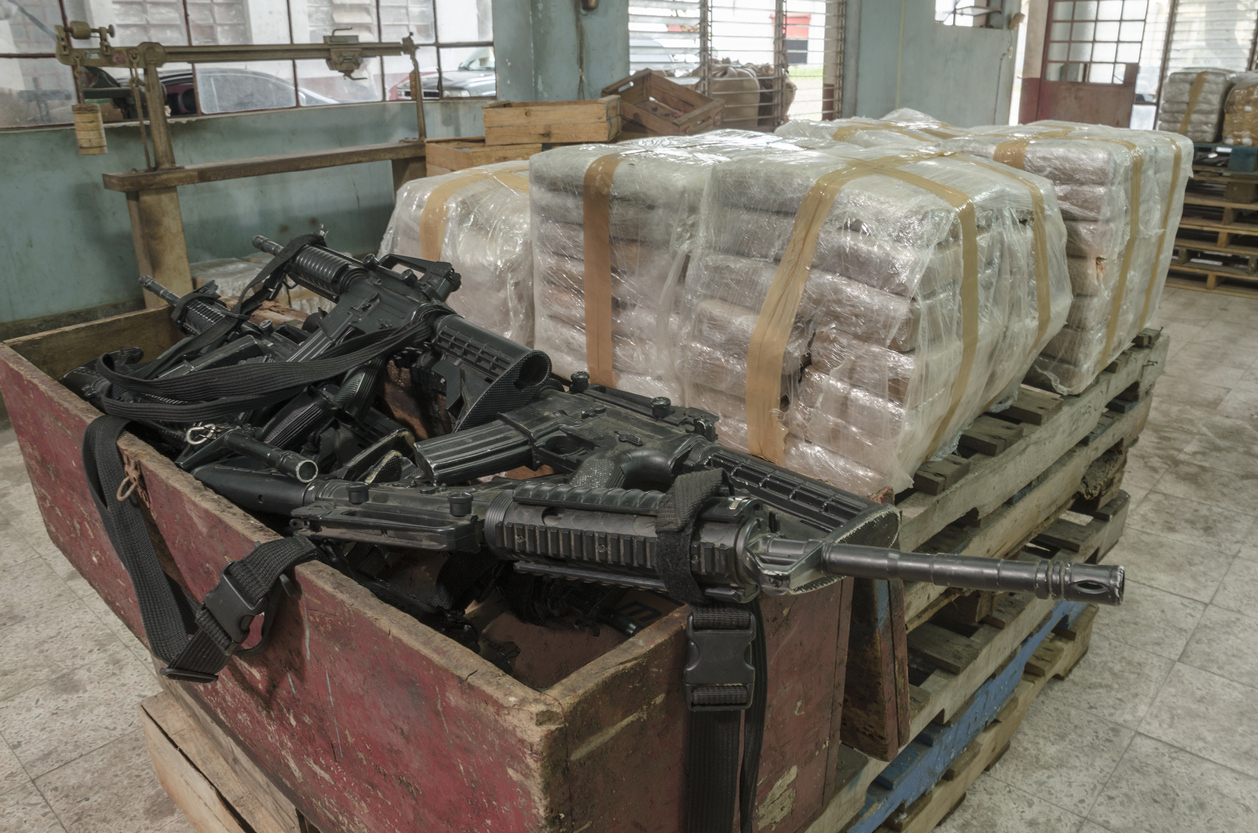Nevada’s connection to drug cartel arms trafficking is no surprise

Those who analyze the Mexican drug cartels’ insatiable need for weapons to defend and expand their territory sometimes call it the “River of Iron.” It’s a reference to the torrent of high-caliber firearms that flows south from the United States.
When the news broke this week that six men with ties to Mexico’s super-violent Cártel Jalisco Nueva Generación (CJNG) had been indicted for allegedly smuggling weapons and ammunition in an effort to feed the transnational criminal organization’s unquenching thirst for firepower, the fact that one defendant had resided in Pahrump might have been lost in the larger story.
It should come as no surprise. Nevada has long been among the tributaries that feed the river that has helped make Mexico one of the most dangerous places in the world.
It is estimated that 70 percent of the thousands of weapons that wind up in the hands of Mexican sicarios come from the United States. Scores are purchased legally with drug profits by straw buyers in states that pay lip service to waiting periods and background checks. Increasingly, others are bought from private gunsmiths capable of turning out fully automatic weapons and military-grade assault rifles.
Unsealed Jan. 24, the federal grand jury indictment alleges Marco Antonio Santillan Valencia of Whitter, California, schemed to provide military-grade weapons to the CJNG with the assistance of five other defendants, including Marco Santillan Jr. of Pahrump. The younger Santillan is scheduled for arraignment Feb. 2 in U.S. District Court in Los Angeles. Purchasing guns and ammunition in several states, Pahrump provided him with a weapons cache on the way south. In addition to the weapons and machine gun parts, authorities recovered hundreds of thousands of rounds of ammunition, including 50-caliber armor-piercing incendiary rounds.
Boiled down to simplest terms, America is an unabashed willing seller and the drug cartels are willing buyers.
That goes double for the ruthless CJNG, which has grown from a splinter organization of the Michoacán-based Milenio Cartel to rival the Sinaloa Cartel for supremacy. Now based in Jalisco, CJNG’s rapid rise and expansion under leader Nemesio Oseguera Cervantes, known as “El Mencho,” is directly related to its use of violent tactics once reserved for the worst of the worst terrorist organizations.
Often traveling in armor-plated pickup trucks with 50-caliber machine guns mounted on the roof, they’ve shown the capability of controlling towns, overwhelming regional police departments, and challenging the Mexican military. The carnage is prolific, and very public.
One example: In January, the bodies of 10 suspected Sinaloa Cartel members were found stuffed into a Mazda SUV parked outside the office of the governor of Zacatecas state. A message at the scene credited CJNG.
The governor had broken ranks and successfully persuaded Mexican President Andres Manuel Lopez Obrador to send a heavily-armed federal task force of Army soldiers and National Guard troops to quell the growing violence in the capital of the centrally-located Mexican state.
The corpses in the SUV indicated the cartel was not impressed, the DEA’s former chief of international operations Mike Vigil says.
“They have become a paramilitary force,” he explains. “They train with military tactics and wear uniforms with military helmets. They go into a lot of cities whose police forces are unable to do anything because they are outgunned.”
Training includes surviving a terror school meant to transform teen-agers and young men into remorseless killers capable of decapitating and even eating a piece of their enemy’s flesh without emotion, Vigil says. It is a cartel as death cult, but one that also attempts to pass itself off as a collection of Robin Hoods by providing food for villagers and toys for children.
The bottom line is the burgeoning American market for methamphetamine, and synthetic opioids including fentanyl.
It all starts with the man called El Mencho, a poor boy from Michoacan who picked avocados to survive. After brushes with American law enforcement and a stint in prison for drug trafficking, he parlayed a job as a Mexican police officer into a menacing presence reaching from the Pacific side to the Caribbean side of the country. Today, CJNG sicarios are found in 23 Mexican states. He is as rich as a king, but also has a $10 million bounty on his head.
“Mencho has ruled through tremendous aggression and extreme violence. He has guided the Jalisco New Generation to a rapid expansion,” Vigil says. “The more weaponry and firepower they have, it only facilitates the impunity that they operate with and then also the intimidation that they generate. Without the weapons, they would not be able to expand. They would not be able to intimidate, and they would not be able to be at war with a lot of cartels in several different states.”
America’s voracious appetite for drugs, and the dramatic increase of methamphetamine and synthetic opioid use, including fentanyl, feed billions annually into cartel coffers. Millions make their way back north each year and are spent to equip armies of killers to enforce, intimidate and expand the reach of the cartels.
Without the U.S. drug market and easily obtained weaponry, the cartels that menace Mexico would dramatically decrease. But the River of Iron flows with only an occasional interruption. We are not bystanders. We are complicit.
The border, as always, is closer than it appears.
John L. Smith is an author and longtime columnist. He was born in Henderson and his family’s Nevada roots go back to 1881. His stories have appeared in Time, Readers Digest, The Daily Beast, Reuters, Ruralite and Desert Companion, among others. He also offers weekly commentary on Nevada Public Radio station KNPR.
